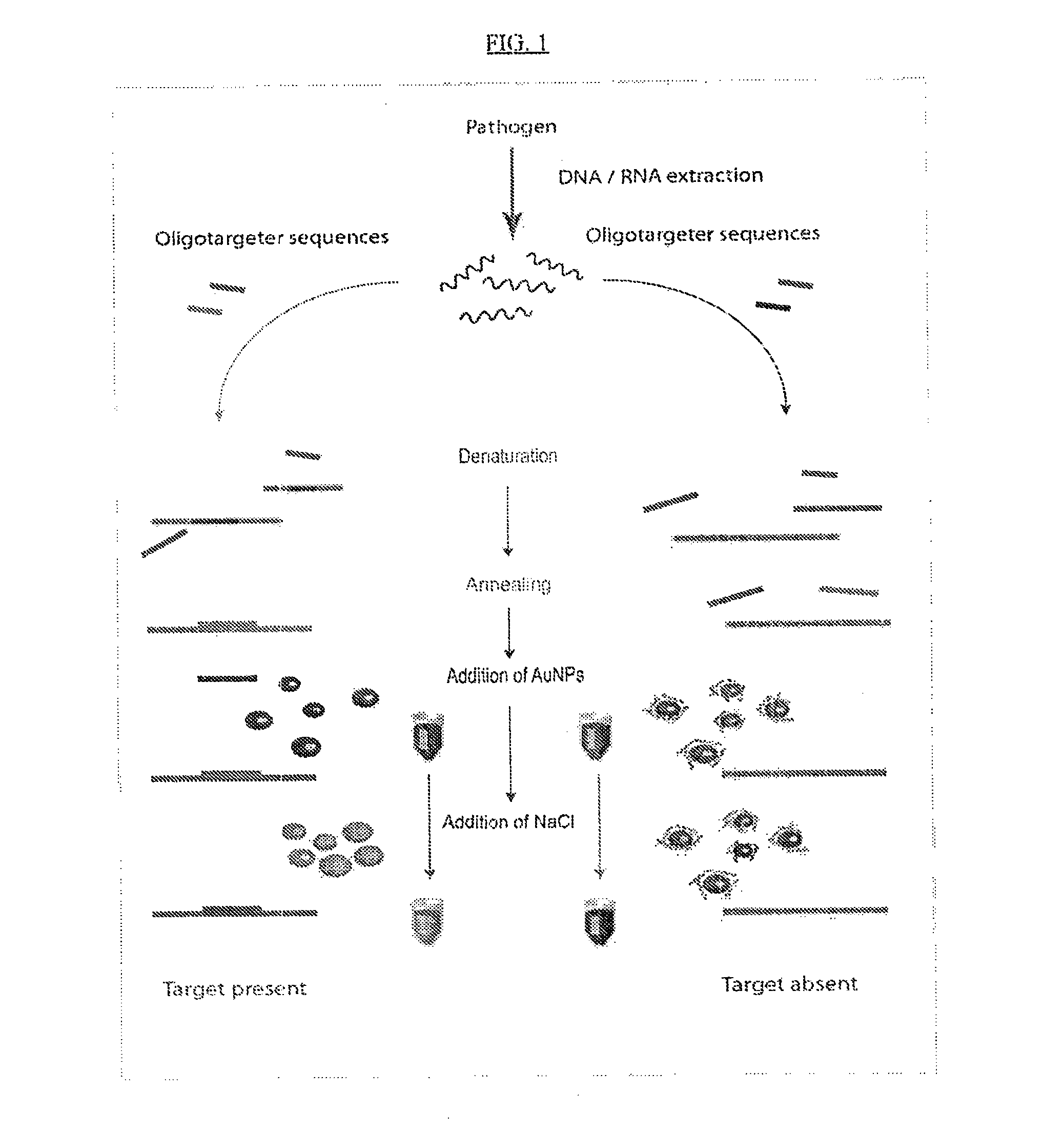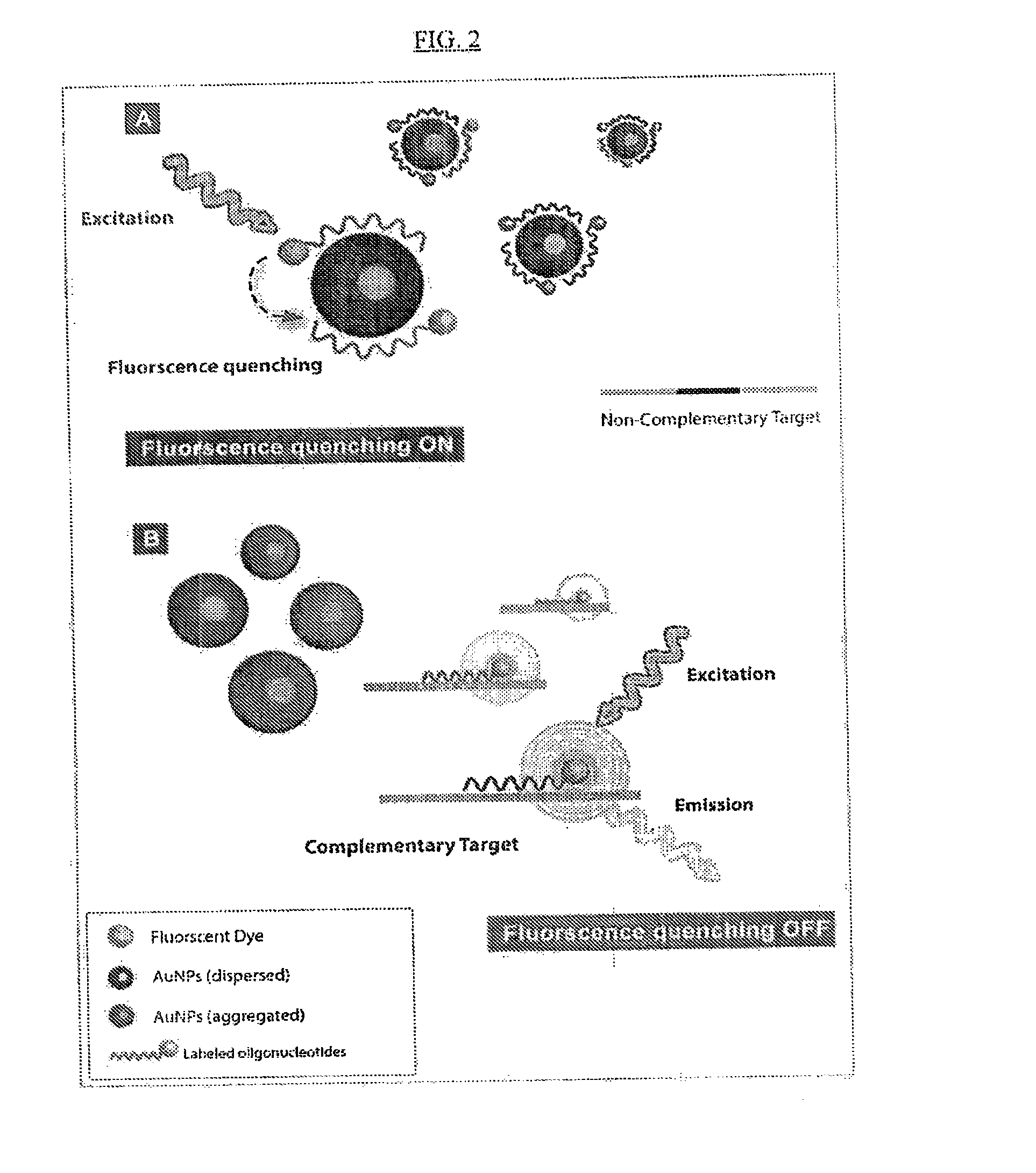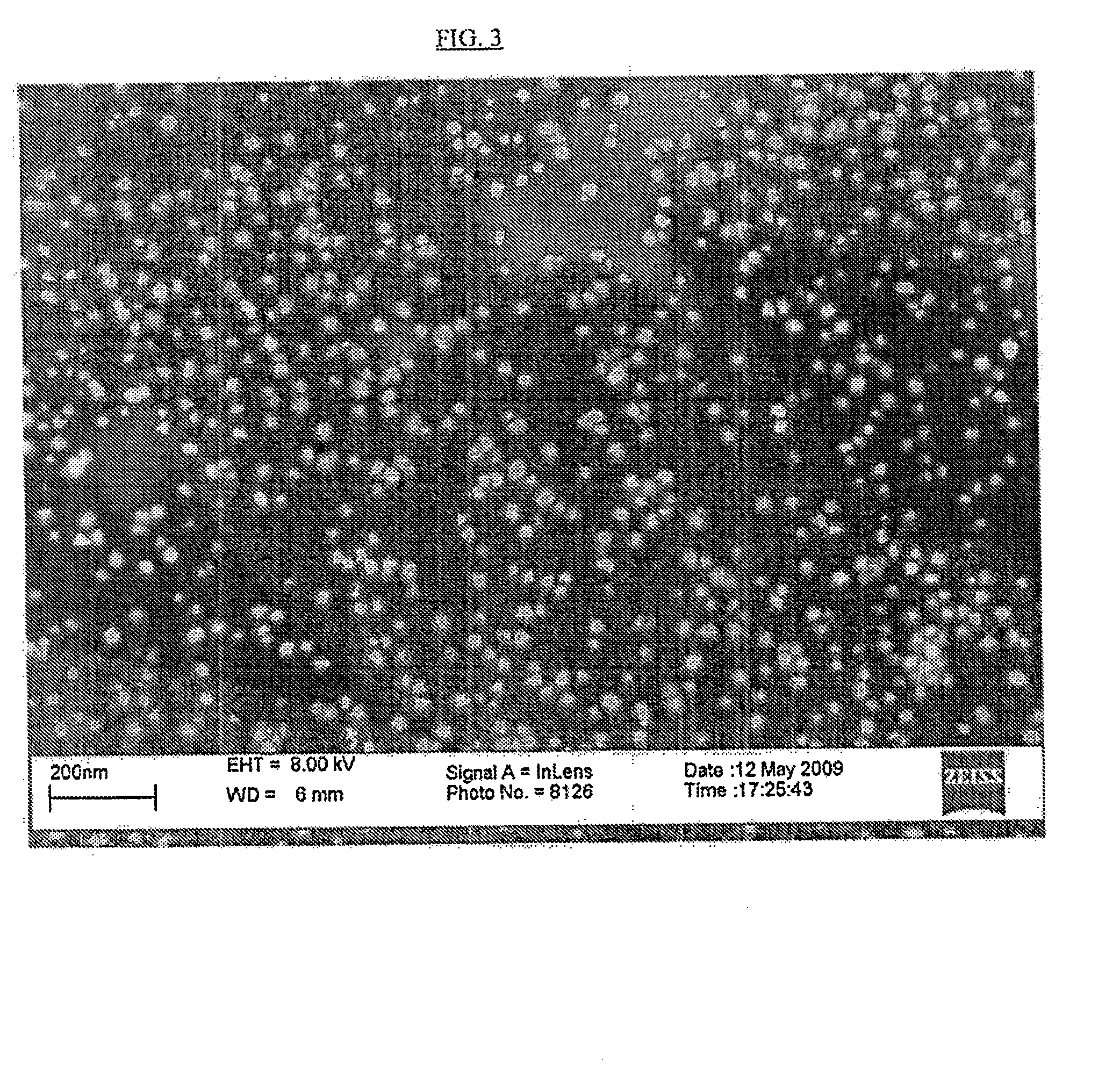Detection of nucleic acids using unmodified gold nanoparticles
a nucleic acid and gold nanoparticle technology, applied in the field of detection of nucleic acids using unmodified gold nanoparticles, can solve the problems of high inflammatory host response, unproven methods or evaluations for microorganisms, and difficulty in ntm, and achieves high sensitive and specificity, simple colorimetric assay, and rapid and sensitive detection. , the effect of sensitive detection of different pathogens
- Summary
- Abstract
- Description
- Claims
- Application Information
AI Technical Summary
Benefits of technology
Problems solved by technology
Method used
Image
Examples
example 1
Rapid Detection of Acinetobacter baumannii Complex Using Unmodified Gold Nanoparticles
Background:
[0237]Acinetobacter
[0238]Acinetobacter spp. are aerobic Gram-negative bacilli commonly present in soil and water as free-living saprophytes. They are also isolated as commensals from skin, throat and various secretions of healthy people, as well as causing human infections (Bergogne-Berezin 2001).
[0239]Epidemiology
[0240]Strains of Acinetobacter are widely distributed in nature and are found in virtually all samples of soil and fresh water when appropriate culture techniques are used (Bergogne-Berezin and Towner 1996). A range of species have been identified from soil, sewage, plants and food products, although the species associated with human disease are not normally found in such sites.
[0241]Human Carriage
[0242]Human carriage of Acinetobacter has been demonstrated in normal individuals: it forms part of the bacterial flora of the skin and has been found in the axillae, groin and toe w...
example 2
Direct Detection of Mycobacterium tuberculosis Complex Using Gold Nanoparticles
[0277]Specimens
[0278]Sputum samples could be cultured on either liquid (7H9 or 7H10 broth) or solid media (Lowenstein Jensen) and processed for DNA extraction. Other biological specimens such as sputum, bone marrow, whole blood, urine, or infected macrophages are treated first for inactivation in category 3 biosafety level and regarded as potential hazardous then processed for DNA extraction1.
[0279]Clinical specimens are heated in a sealed tube for 80° C. for 1 hour for killing of bacterial cells. Subsequent steps of cell lysis, protein removal, DNA precipitation and recovery are done in class 2 or 3 laminar flow cabinet1. All Mycobacterium tuberculosis molecular detection methods require culturing of samples followed by DNA extraction.
[0280]DNA Extraction
[0281]Briefly, cells were harvested and re-suspended in Tris-EDTA buffer (TE); pH 8.0 and cells were centrifuged and harvested. All cell pellets were st...
example 2a
Colorimetric AuNPs Assay for Detecting Full Length Mycobacterial RNA in Clinical Specimens
[0328]Targeting RNA sequences from mycobacteria presents several challenges due to the harsh assay conditions necessary required to lyse Mycobacterium cells and possible sample contamination with host RNA. Mycobacteria RNA sequences are detected under physical cell disruption condition or single step RNA extraction using guanidium thiocynate. This approach is applied to RNA obtained from isolates (colony) identification and to RNA obtained from clinical samples which contain a sufficient concentration of mycobacterial RNA and a sufficiently low concentration of host RNA. Oligotargeters and assay conditions are selected based on the quantity and quality of the RNA sample.
PUM
| Property | Measurement | Unit |
|---|---|---|
| color | aaaaa | aaaaa |
Abstract
Description
Claims
Application Information
 Login to View More
Login to View More - R&D
- Intellectual Property
- Life Sciences
- Materials
- Tech Scout
- Unparalleled Data Quality
- Higher Quality Content
- 60% Fewer Hallucinations
Browse by: Latest US Patents, China's latest patents, Technical Efficacy Thesaurus, Application Domain, Technology Topic, Popular Technical Reports.
© 2025 PatSnap. All rights reserved.Legal|Privacy policy|Modern Slavery Act Transparency Statement|Sitemap|About US| Contact US: help@patsnap.com



